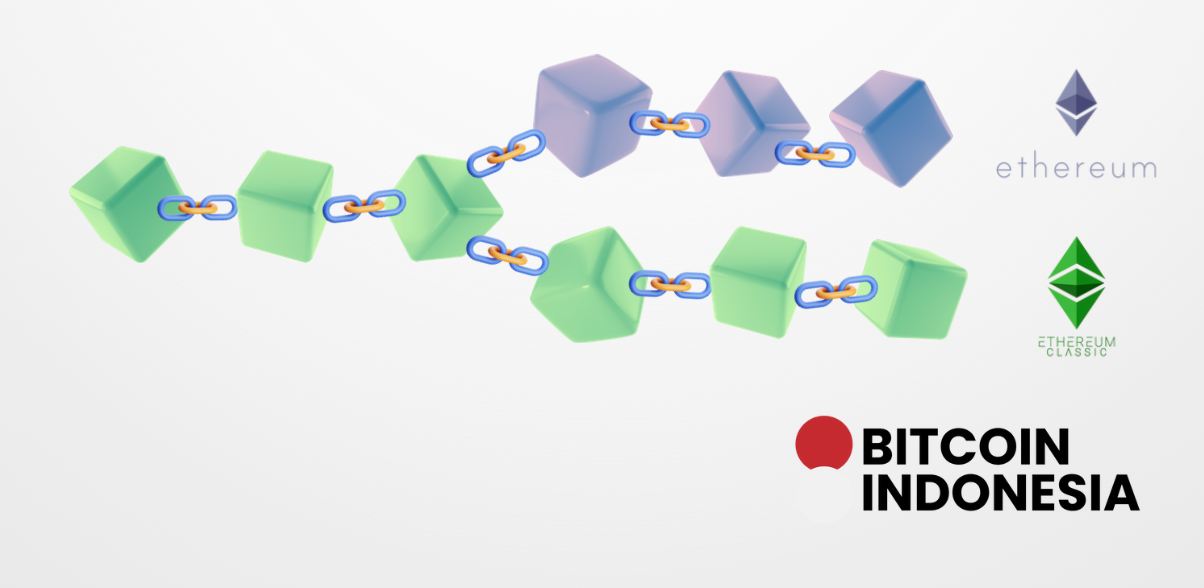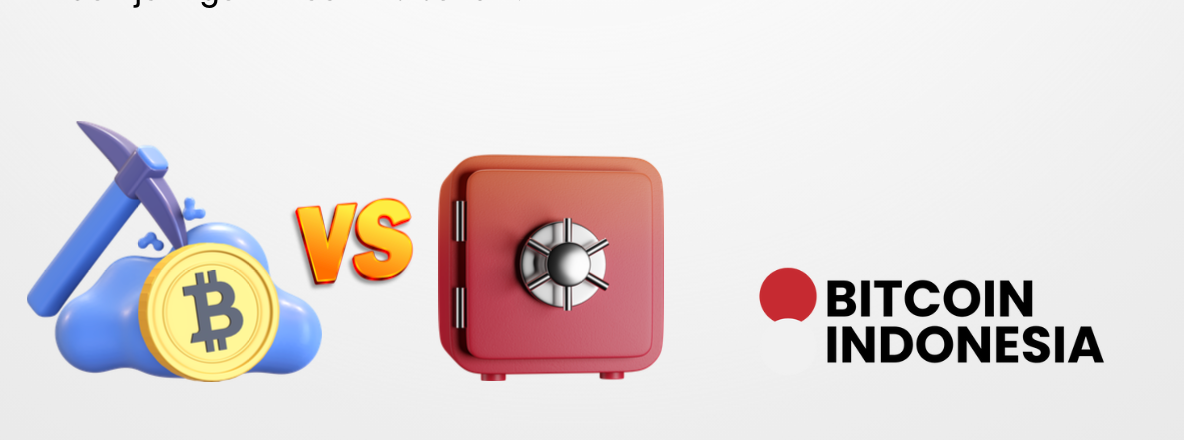21 Reasons Why Bitcoin is Not Crypto
We created this book in response to the many questions we’ve received online, at meetups, and at the Bitcoin House in Bali asking whether Bitcoin is considered a cryptocurrency. To clear up the confusion once and for all, we’ve written this free book in Indonesian. You can access the book for free at HERE or on GitHub. If you prefer a physical copy, you can purchase the printed version through our Online Shop at or pick it up directly at the Bitcoin House in Bali. We encourage everyone to dive into this learning journey, and we hope that Bitcoin brings value and financial empowerment to you and your family.

Book cover of the new books: “21 Reasons Why Bitcoin is Not Crypto” by Bitcoin Indonesia
1. Bitcoin Does Not Have a CEO
Bitcoin does not have a CEO or central leader responsible for the direction or decisions of the project. All decisions in Bitcoin are made through global decentralized community consensus. Bitcoin operates on the principle that every user and node in the network has the same voice in decision-making.
In comparison, Terra (which developed the stablecoin UST and token LUNA) is led by Do Kwon as the CEO of Terraform Labs. Do Kwon has significant authority in decision-making and the technical direction of the project. This centralized influence made important decisions—such as maintaining the value of UST despite extreme market pressure—fall into the hands of one entity, Do Kwon and his core team.
Example:
Do Kwon actively pushed for the algorithmic stablecoin model UST and sustained it through internal strategies despite facing significant risks. When the system failed, these centralized decisions caused the collapse of the value of LUNA and UST, which erased over $40 billion in market capitalization in just a few days. Bitcoin does not have such a centralized decision-making system, where a community-wide control system balances such decisions.
Sources:
euronews.com
sec.gov
2. Bitcoin Does Not Have a Managing Foundation
Bitcoin does not have a foundation or institution controlling or facilitating the development of its network or its technical policies. There is no organization directly responsible for Bitcoin. This makes it different from other cryptocurrencies like Ethereum, which has the Ethereum Foundation, a non-profit organization founded by the creators of Ethereum. This foundation has funds, a team, and an organizational structure to manage the development of Ethereum and support initiatives within its ecosystem.
Example:
Ethereum initially used the Proof-of-Work (PoW) consensus algorithm, just like Bitcoin, relying on computational power (mining) to verify transactions and secure the network. However, on September 15, 2022, Ethereum executed “The Merge”, transitioning from PoW to Proof-of-Stake (PoS). This transition was led and facilitated by the Ethereum Foundation along with Ethereum’s core developers.
Source:
ethereum.org

Why is there a dead rat on the Ethereum logo?
3. Bitcoin Does Not Have Pre-Mine
Bitcoin was launched without pre-mining, meaning no coins were mined or allocated in advance for founders, teams, or investors before being released to the public. In contrast, many other cryptocurrency projects like Solana, Cardano, or Ethereum have pre-mining, where a large amount of tokens is given to the founders or early investors before the tokens are traded on the open market. This gives the founders and early investors a significant advantage in controlling the initial supply and price of the coin.
Example:
Ethereum initially conducted an ICO (Initial Coin Offering) in 2014 to raise funds and distribute ETH to early investors. This gave the development team and early investors greater control over the number of tokens available before the project was widely launched.
4. Bitcoin Does Not Have Insiders
Bitcoin does not have “insiders” in the sense that no individual or group has exclusive access or full control over assets and decisions within the network. All transactions and changes in the Bitcoin network are transparent and recorded on the blockchain for everyone to see.
In other cryptocurrencies, like Binance Coin (BNB), there are insider groups or entities that have greater access to control supply and strategic decisions that affect the price and distribution of coins.
Example:
In the case of Binance Coin (BNB), Binance as a cryptocurrency exchange has significant control over the supply of tokens and can change policies or modify distributions. Binance’s developers and employees also hold a large amount of BNB, which can influence the market value of the coin.
5. Bitcoin Does Not Have Early Investors
Bitcoin was launched without early investors who benefited from lower prices or limited token distributions. Everyone had equal access from the moment Bitcoin was first created. This is different from many other cryptocurrencies like Solana or Avalanche, which had early investors and VC (venture capital) holders who gained a significant advantage by buying tokens at lower prices before the coins were traded in the public market.
Example:
Solana, for example, raised funds through several rounds of VC investment before the public launch, giving early investors access to tokens at much lower prices than the market price after the launch.
6. Bitcoin Does Not Have an Office
Bitcoin does not have a physical office or location controlled by an entity or managing team. The Bitcoin network is fully decentralized and spread across the globe, with thousands of nodes distributed worldwide, each run by individuals or organizations supporting the network without needing physical facilities.
In contrast, many other crypto projects like Ripple (XRP) or Cardano have centralized headquarters, making it easier to carry out project development and coordination.
Example:
Ripple has a headquarters in San Francisco and a development team working there. This allows Ripple to coordinate more easily with regulators and build partnerships with global financial institutions. Bitcoin does not have such an office, and its developers work remotely, enhancing the decentralization of the network.
7. Bitcoin Does Not Have a Website
Bitcoin does not have a single official website that serves as the primary source of information. There are many sites providing information about Bitcoin, but there is no site managed by one entity claiming to be the official authority on Bitcoin. Other cryptocurrency projects, such as Ethereum or Polkadot, have official websites that serve as the main hub of information, providing updates, announcements, or documentation about their projects.
Example:
Ethereum has an official website at “ethereum.org” which provides documentation, news, and announcements about every update or progress of the Ethereum network. Bitcoin does not have an official site managed by one entity because the Bitcoin network is open and managed by the community.
8. Bitcoin Does Not Have a Paid Executive Team
Bitcoin does not have an executive team that is paid to run the project. All Bitcoin developers work voluntarily or based on their interest in decentralization and financial freedom. In contrast, projects like Ethereum or Polkadot have paid executive teams supported by organizations such as the Ethereum Foundation or Web3 Foundation for Polkadot.
Example:
Ethereum Foundation has a full-time paid development team to ensure Ethereum remains operational and secure. Bitcoin, on the other hand, relies on contributions from volunteer developers who wish to improve and develop the Bitcoin codebase without financial compensation.
9. Bitcoin Does Not Have a Marketing Team
Bitcoin does not have a paid marketing team to promote or market the project. In contrast, many other cryptocurrency projects like Litecoin or Dogecoin rely on marketing teams or even celebrities to promote and gain media attention. Bitcoin has grown organically because of the values and principles it upholds and the active user community.
Example:
Dogecoin, for example, heavily relies on marketing through social media and influencers such as Elon Musk to promote their token. Bitcoin does not have sponsored marketing and continues to thrive through the strength of its network and community.
10. Bitcoin Does Not Have a Paid Development Team
Bitcoin does not have a team of developers who are directly paid to work on this project. All developers contributing to Bitcoin’s development work voluntarily or at their own initiative. Many other cryptocurrencies, like Solana or Cardano, have paid development teams working on network updates and improvements.
Example:
Solana, for example, has a paid development team employed by the company behind it, such as Solana Labs, to ensure the network runs smoothly and to increase capacity and features. Bitcoin, on the other hand, depends on developers who work voluntarily without direct financial compensation.
11. Bitcoin Does Not Experience Hard Forks Managed by Centralized Entities
Unlike many other cryptocurrencies that frequently undergo hard forks based on the decisions of specific entities or core teams, Bitcoin only makes major changes through global community consensus. This ensures protocol stability and long-term trust.
Meanwhile, cryptocurrencies like Ethereum once conducted a major hard fork following the DAO hack in 2016, which eventually split Ethereum into ETH and Ethereum Classic (ETC). This decision was made by core developers and the foundation, demonstrating centralized control over the protocol.
Example:
Ethereum Classic maintained the original transaction history without rollback, whereas Ethereum reversed the investor funds. Bitcoin has never conducted a rollback or similar intervention, despite facing various challenges from the beginning.
12. Bitcoin Does Not Have an Initial Price
Bitcoin does not have an initial price or a price set before launch. The price of Bitcoin is formed through an open market based on demand and supply. Other cryptocurrency projects like Ethereum or Binance Coin often have an initial price set through ICO (Initial Coin Offering) or presale, providing an advantage to those who bought earlier.
Example:
Ethereum held an ICO in 2014 with an initial ETH price that was much cheaper compared to the market price today. This gave significant profits to early investors.
13. Bitcoin Has Higher Network Security
Due to its decentralized nature and management without third parties, Bitcoin has a very high level of network security. Each Bitcoin transaction is stored publicly on the blockchain and requires consensus from the entire network to validate new blocks. This makes it safer and more transparent compared to many other cryptocurrencies that may have higher failure points.
Example:
Binance Coin (BNB), for example, is more susceptible to security attacks involving third parties (such as exchanges being hacked) because most user assets are stored on centralized exchanges.
14. Bitcoin Does Not Have a Single Person Controlling It
Bitcoin does not rely on one individual or group to control it. All decisions in Bitcoin development are made through community consensus, with many developers and users involved in each major decision. In contrast, many other cryptocurrency projects have one founder or managing team that plays a major role in the direction of the project, like Vitalik Buterin for Ethereum or Charles Hoskinson for Cardano.
Example:
Vitalik Buterin has significant influence in Ethereum’s development, including decisions to upgrade network capacity with changes like Ethereum 2.0 and the transition to Proof-of-Stake. On the other hand, Bitcoin does not have one central figure who leads and controls the entire project.
15. Bitcoin Uses Timechain, Not Just Blockchain
Bitcoin uses the term “timechain” to describe how the network records the sequence of transactions with a primary focus on secure and ordered time. Unlike the term “blockchain” used by many other cryptocurrencies, Bitcoin’s timechain emphasizes recording transactions chronologically and immutably, making it more secure and transparent. Bitcoin aims to ensure that each transaction is recorded in a clear timeline, not just as part of connected blocks.
Example:
Ethereum also uses a blockchain structure but does not have the same focus on time order. Ethereum focuses more on smart contracts and decentralized applications (dApps), while Bitcoin maintains the integrity of transaction sequences through the stricter timechain concept.
16. Bitcoin Uses a Proof-of-Work System
Bitcoin uses a Proof-of-Work (PoW) system, where miners run specialized computers to verify transactions and secure the network. This process does require significant energy but is what makes Bitcoin’s network highly secure and decentralized.
While there are concerns about environmental impact, many miners are now switching to renewable energy sources such as hydro, solar, and geothermal power. Furthermore, Bitcoin’s energy consumption needs to be considered fairly—such as in comparison to the global banking industry or gold mining, which also consume large amounts of energy.
In comparison, Ethereum switched from Proof-of-Work (PoW) to Proof-of-Stake (PoS), which is more energy-efficient. However, PoS has often been criticized for centralizing power in the hands of those with the most assets, weakening decentralization principles.
Bitcoin maintains PoW for reasons of security, transparency, and resistance to centralization. For many of its supporters, PoW is not just a technical mechanism, but the main foundation that ensures the reliability, openness, and value of the Bitcoin network itself.
17. Bitcoin Does Not Rely on Third Parties for Storage
Bitcoin can be stored directly in a user’s wallet without requiring third parties such as exchanges or wallet companies, which increases user control over their assets. This is different from many other cryptocurrencies, which often rely on third-party service providers to store and manage private keys or tokens.
Example:
Many users of Ethereum or Binance Coin (BNB) often store their coins on exchanges or wallets managed by companies, which opens up potential security risks and lower control over their assets.
18. Bitcoin is Safer from Potential Rug-Pulls
One of the biggest risks in many cryptocurrency projects is the potential for a rug-pull, where the development team or related parties pull funds from the market in an unauthorized or non-transparent way. In many cases, cryptocurrency projects that are not fully decentralized have a greater risk of rug-pulls, where developers or certain parties can control a large amount of tokens and manipulate prices or liquidity. Bitcoin, due to its high level of decentralization and lack of a single controlling entity, is much safer from potential rug-pulls.
Example:
Cryptos like Mantra DAO recently experienced a rug-pull attack, where the development team or an individual controlling the project withdrew large sums of funds from the market abruptly, leaving investors with significant losses. Bitcoin, on the other hand, is much harder to hack or manipulate in a rug-pull scenario due to its lack of a centralized team managing the assets or control.
19. The Fixed 21 Million Bitcoin Supply
The 21 million figure for Bitcoin is not just the total number of coins, but a core foundation of its value and the trust placed in it. This number was set directly by Satoshi Nakamoto in the Bitcoin code and cannot be changed without altering the entire network—which is nearly impossible due to its decentralized system.
Every four years, the amount of Bitcoin mined decreases through a halving process until it reaches the maximum limit around the year 2140. This scarcity is not a promise, but a transparent mathematical law maintained by the entire network. This is what makes the number 21 million considered “sacred” in the cryptocurrency world—as a symbol of resistance to inflation and manipulation.
Meanwhile, most other cryptocurrencies do not have a fixed supply limit. Their supply can change according to technical needs or community decisions through governance systems. For example, Ethereum has not set a maximum supply from the start and even changed its mechanism so that part of the ETH is burned in every transaction. This flexibility allows for innovation but also means there is no guarantee of scarcity like Bitcoin.
This is the difference: Bitcoin promises absolute scarcity, while other cryptos choose flexibility to remain relevant and adaptive to technological and market developments.
20. Bitcoin Does Not Adopt Systems Like Interest or Usury
Unlike many cryptocurrencies such as Ethereum, Solana, or Cardano, Bitcoin does not offer staking features that allow users to lock assets to earn passive income. The staking system in Proof-of-Stake (PoS) is often considered similar to usury in traditional financial systems—where one can earn profits simply by holding assets, without any active contribution or real effort.
Meanwhile, Bitcoin continues to use Proof-of-Work (PoW), where rewards are only given to miners who run computational processes to secure the network—this involves real effort and costs. This is different from fiat systems or interest, where profits or income are often generated simply from holding money or assets, without active effort.
By not relying on a “passive income” system like staking, Bitcoin maintains principles of fairness and transparency in the distribution of value, without relying on a model similar to usury, which generates profits without real contribution or hard work.
21. Bitcoin is Like the Discovery of Fire and the Wheel
Bitcoin can be considered a great discovery, on par with fire and the wheel, in the revolution of technology. Just as fire changed civilization by providing light and warmth, Bitcoin is changing the global financial system by enabling faster, cheaper transactions without intermediaries like banks.
Just as the wheel enhanced human mobility, Bitcoin’s timechain increases the efficiency of value transfer by recording transactions in an immutable time sequence.
Many other cryptocurrencies, like Ethereum, Solana, or Cardano, only mimic the basic concept of Bitcoin without having the same strength in the system. They tend to use Proof-of-Stake (PoS) or other mechanisms that innovate faster, but are less decentralized and more easily manipulated by large entities.
Bitcoin is not just a digital currency—it’s a solid and proven system with principles that remain consistent, while many other cryptocurrencies try to imitate it but do not have the same strong system foundation as Bitcoin.











